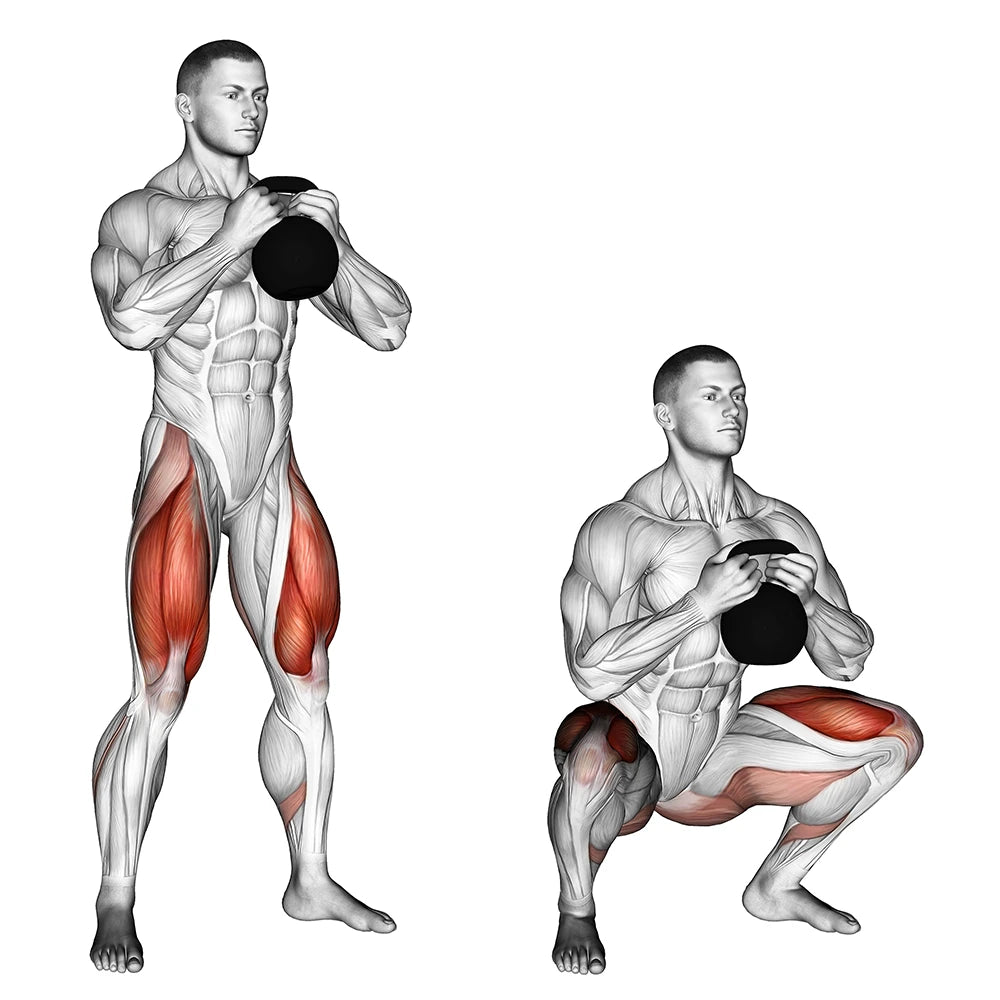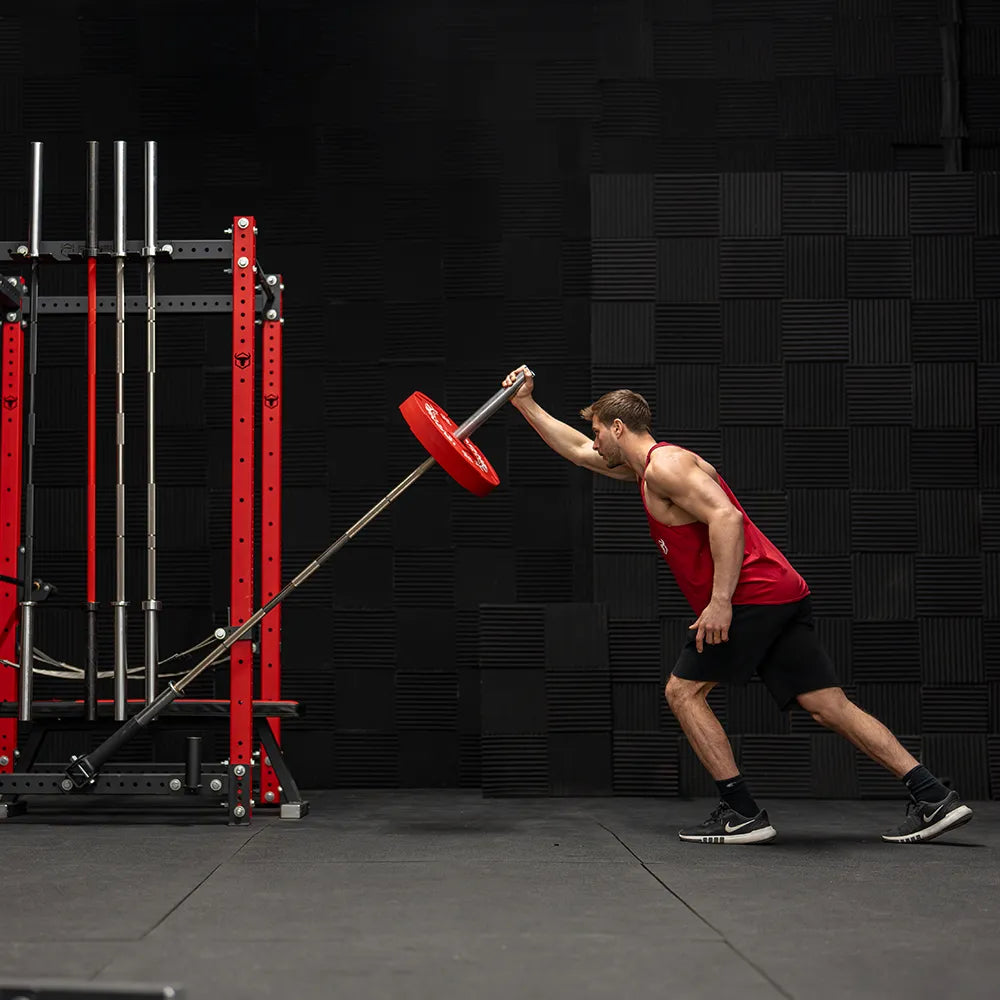How to fail a squat: How to bail from a squat?

Safely Bailing from a heavy Squat
Pushing your limits in strength training can be a thrilling journey, but it’s essential to know how to fail safely. The concept of "failing forward" involves finding your boundaries without compromising safety.
Pushing to failure can lead to progress, but there are right and wrong ways to bail during a heavy squat.
A sturdy power rack equipped with safety bars is a must-have for squatting safely, especially if you're training alone or without a spotter.
The Importance of spotters and safety equipment
When it comes to heavy squats, having a spotter is invaluable. They provide crucial support if you start to struggle, helping you avoid bailing altogether.
If a spotter isn’t available, safety bars or pins are your next best option. Set them at the right height to catch the barbell if you fail.
However, don’t rely on safety equipment as a regular part of your training. Constantly overloading weight and bailing can damage both your equipment and your form.
Spotter arms are a great alternative for those training solo, catching the bar without risking damage to your gym setup.
How to spot a squat?
Spotting a squat requires careful attention and technique to ensure the lifter's safety. Stand behind the lifter, positioning yourself close enough to assist but not in their way.
Place your hands just beneath their armpits or around the chest area, ready to help stabilize their torso if they struggle. As the lifter descends, bend your knees slightly to follow their movement, staying in sync with them.
Avoid grabbing the bar unless absolutely necessary. If the lifter begins to lose balance or fails the lift, be ready to step in by supporting their torso and guiding them back to a standing position.
Always communicate with the lifter before the set begins to understand how they want assistance and ensure you both know the plan in case of failure.
Using spotter arms or safety bars as a backup can also provide extra security.
The Risks of Bailing a Squat
Bailing should be reserved for emergencies. Frequent bailing can damage your barbell, squat rack, and other gym equipment.
It may also lead to improper technique, bad habits, and a higher risk of injury. Focus on progressive loading, proper form, and knowing your limits to minimize the need for bailing.
Investing in a high-quality barbell designed to withstand heavy lifting stress can help prevent damage during those rare moments when you need to bail.
How to safely bail from a squat
For a back squat, set the safety bars just below your squat depth. Push the bar backward off your shoulders while moving your body forward.
The bar should drop onto the safeties, leaving you unharmed. With a front squat, set the safety bars properly.
If you need to bail, release the bar from your shoulders and let it fall forward onto the safeties while stepping back to avoid contact.
Practice these movements with lighter weights to get comfortable with the process. Knee wraps can protect your knees and provide joint support during heavy lifts, reducing the likelihood of needing to bail.
General Tips for Bailing a Lift
Stay calm and focused when bailing. Panicking can lead to poor decision-making and increase the risk of injury.
Keep a neutral spine and avoid twisting or bending awkwardly to protect your back. Always use safety bars or a power rack to catch the bar, avoiding damage to your home gym setup.
Make sure your equipment can handle dynamic loads.
Durable, high-quality weight plates can help you train with confidence, knowing your gear is built to handle heavy lifting stress.
The physics of bailing a squat
When a weight is dropped or thrown, the dynamic load on impact is significantly higher than its static weight due to acceleration and impact forces. This can cause damage if you’re not using proper safety equipment.
Regularly inspect your squat rack, safety bars, and weights to ensure they’re in good condition. High-capacity power racks, like the 5000 Series, are ideal for heavy lifters.
A lifting belt provides core stability, helping prevent injury when lifting heavy or in situations where you might need to bail.
Bottom Line
Bailing should be a last resort. Always prepare by using spotters and safety bars, training within your limits, and focusing on progressive overload.
Prioritize safety in your strength training. Proper preparation and technique will allow you to push your limits while minimizing risk to both yourself and your equipment.
Keep your home gym organized and your equipment protected by using a weight storage rack to safely store your plates, barbells, and other gear.


